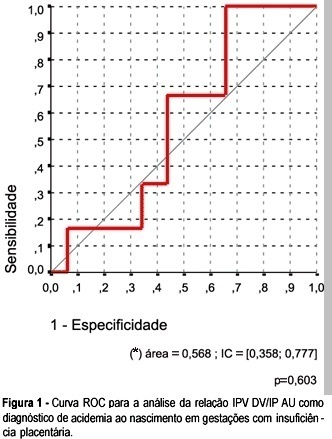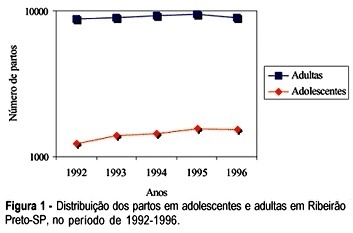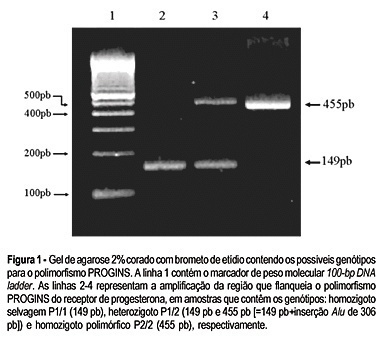Summary
Revista Brasileira de Ginecologia e Obstetrícia. 2004;26(8):595-602
DOI 10.1590/S0100-72032004000800002
PURPOSE: to evaluate the effects of estradiol benzoate associated with dexamethasone on the squamocolumnar junction (SCJ) of rats in permanent estrus (PE) and then ovariectomized (Ovx). METHODS: thirty female rats were divided into six groups of five animals each: PhEG rats in physiological estrus (PhE) treated with propylene glycol (vehicle); OVXG rats in PhE, Ovx and treated with vehicle; PEG - rats in PE treated with vehicle; PEOVXG rats in PE, Ovx and treated with vehicle; ESTRG rats in PE, Ovx and treated with 10 mg per day benzoate of estradiol, and DEXAG in PE, Ovx and treated with 10 mg per day estradiol benzoate associated with 0.8 mg dexamethasone. PE induction was performed with 1.25 mg testosterone propionate per animal per day after birth. After 90 days, rats in the OVXG, EPOVXG, ESTRG, and DEXAG groups were ovariectomized. After 21 days of castration, all animals received the corresponding treatment for five days. At the end of the experiment, all animals were sacrificed and the uteri removed for histological routine. RESULTS: the borders of the SCJ in the PEG were irregular and not clearly delineated, with many buds towards the direction of the lamina propria as well as a reduction in the leukocyte number compared to the PhEG. The SCJ of the OVXG and PEOVXG was not very visible, with cubical epithelium on the endometrial side and with reduction in the layers of squamous epithelium due to stromal atrophy. The SCJ in the ESTRG was more developed than in the OVXG and PEOVXG, but it was similar to that of the PEG, having unclear borders. In contrast, the SCJ of the DEXAG was well-delineated and similar to the PhEG. CONCLUSION: our data suggest that estrogen associated with dexamethasone may be important for remodeling SCJ morphology in female rats with previously induced permanent estrus and subsequent ovariectomy.

Summary
Revista Brasileira de Ginecologia e Obstetrícia. 2004;26(8):655--6662
DOI 10.1590/S0100-72032004000800010
OBJECTIVE: to characterize the features of pregnant women who had elective preterm delivery, and correlate clinical and obstetrical diagnosis with neonatal results. METHOD: A total of 100 pregnant women admitted in the Obstetric Clinic ward and their respective newborns has been evaluated. The inclusion criteria were: single pregnancy, confirmed gestational age by an early scan, absence of labor symptoms and the presence of a maternal or fetal condition leading to preterm delivery indication. The direct causes of elective preterm delivery were classified in groups, to relate them to the neonatal results, taking into account the gestational age. To assess the neonatal results, the following criteria were analyzed: acidosis; 1st and 5st minute Apgar score lower than 7; intracranial hemorrhage; neonatal death; sepsis and respiratory distress syndrome. Statistical analysis used to correlate the causes of delivery and the gestational age to the neonatal results was done by log-linear models. RESULTS: One patient was excluded from the study due to fetal malformation. The most common direct causes of delivery were prenatal fetal distress (49.5%), hypertensive syndromes (21.2%), intra uterine growth restriction (13.1%) and others (16.2%). Among the main neonatal complications there were asphyxia (33.3%), acidosis (30.4%), respiratory distress syndrome (RDS) (26.3%), sepsis (22.2%), intracranial hemorrhage (21.2%) and neonatal death (13.1%). The cause of delivery was associated with acidosis and RDS by log-linear models and the gestational age was associated with RDS, 1st minute Apgar <7, sepsis, intracranial hemorrhage and neonatal death. CONCLUSIONS: the cause of delivery influences the neonatal results. Nevertheless, the most severe complications are directly dependent on the gestational age of delivery. Therefore, the prenatal diagnosis should be rigorously evaluated by the obstetrician, so that the decision to interrupt the pregnancy could be taken at the suitable moment, thus avoiding neonatal complications.
Summary
Revista Brasileira de Ginecologia e Obstetrícia. 2004;26(8):649-653
DOI 10.1590/S0100-72032004000800009
PURPOSE: to assess the correlation between middle cerebral artery peak systolic velocity and umbilical cord blood hemoglobin concentration and to determine its diagnostic value. PATIENTS AND METHODS: a cross-sectional prospective study was performed from January 2000 to May 2003. Forty-four isoimmunized pregnant women underwent a protocol for the identification of fetal hemolysis. When intrauterine transfusions were indicated, the umbilical cord blood hemoglobin concentration was measured at the beginning of the procedure. Each intrauterine transfusion preceded by Doppler velocimetry of the middle cerebral artery was regarded as one case, summing up eighty-three procedures. In all cases, the middle cerebral artery Doppler examinations were performed within the three hours preceding fetal blood sample collection. The systolic velocity peak was recorded and considered abnormal when its value was above 1.5 times the median for the corresponding gestational age. Hemocue® (B-Hemoglobin Photometer Hemocue AB; Angelholm, Sweden) was the device used to measure fetal hemoglobin concentration. The relationship between middle cerebral artery peak systolic velocity and cord blood hemoglobin was obtained by the chi2 test, considered significant at p<0.05. RESULTS: in thirty-three cases the cord blood hemoglobin concentration was below 10.0 g/dL. There was a strong correlation between the two measured variables (p<0.001). The middle cerebral artery peak systolic velocity with values above 1.5 times the median was associated with cord blood hemoglobin concentration below 10 g/mL (p<0,001). The sensitivity of an increased middle cerebral artery peak systolic velocity was 75.8% for the detection of a cord blood hemoglobin level of 10 g/dL or lower. CONCLUSION: the middle cerebral artery peak systolic velocity can be used as a noninvasive method for the diagnosis of fetal anemia.
Summary
Revista Brasileira de Ginecologia e Obstetrícia. 2004;26(8):641-647
DOI 10.1590/S0100-72032004000800008
OBJECTIVE: to investigate whether it is possible to predict acidemia at birth in pregnancies with placental insufficiency using venous-arterial indices: pulsatility index for vein (PIV) of the ductus venosus (DV) over PI of the middle cerebral artery (MCA) and PIV of the DV over PI of the umbilical artery, and establish cut-off values for this prediction. PATIENTS AND METHODS: this was a prospective cross-sectional study involving forty-seven patients with placental insufficiency (umbilical artery resistance and pulsatility indices above the 95th percentile for gestational age) who were submitted to Dopplervelocimetry in the last 24 hours before delivery. All pregnancies were singleton, over 26 weeks of age and without structural or chromosome anomalies. Arterial cord blood was obtained for gasometry immediately after birth. Acidemia was defined as umbilical arterial pH < 7.20 in the absence of uterine contractions and pH < 7.15 in the presence of contractions. Metabolic or mixed acidemia at birth were considered pathological. A ROC curve was calculated for the venous-arterial indices: PIV DV/PI umbilical artery (UA) and PIV DV/PI MCA. A cut-off value was established and sensitivity, specificity, accuracy, positive and negative predictive values and positive and negative likelihood ratios were calculated. RESULTS: The DV/UA PI index was not a good predictor of acidemia at birth. The DV/MCA PI index was related to acidemia at birth (area under the curve 0,785, p = 0,004). The cut-off value was: 0,582, sensitivity 66,7%, specificity 77,1 and accuracy 74,5%. CONCLUSION: the PIV DV/PI MCA ratio is adequate for predicting acidemia at birth in pregnancies with placental insufficiency. The cut-off value was: 0,582.

Summary
Revista Brasileira de Ginecologia e Obstetrícia. 2004;26(8):633-639
DOI 10.1590/S0100-72032004000800007
PURPOSE: to check whether there were differences in some social indicators between adolescent and adult pregnant women in the city of Ribeirão Preto, from January 1992 to December 1996. METHODS: the information was obtained from hospital discharge forms and was analyzed at the Hospital Data Processing Center of the FMRP-USP. The analyzed parameters were: number and types of deliveries, category of hospital admission, occupation, and obstetric diagnosis. The 6.04a text processor Epi-Info System, a data bank and statistics of epidemiology produced by the Centers of Disease Control and Prevention (Atlanta, GA, USA), and Dbase IV were used to process the information. The association between variables was tested by the chi² test, with level of significance set at 5%, using the GraphPad Prism version 2.0, 1995 software. RESULTS: a total of 43,253 deliveries occurred during this period, among which 7,134 (16.5%) corresponded to adolescent deliveries, while 36,119 (83.5%) to adult deliveries. The number of deliveries by adolescent girls increased 25.5% along this period. The proportion of adolescent deliveries in the unified health system category of admission increased, and it was higher than that of the adults'. Only 14.1% of the adolescents belonged to the economically active population, comparing with 34.8% of the adults. Only 6.8% of the adolescents were students, while 79.0% were house-workers or had a nonpaid occupation. In the analyzed period, the ratio of vaginal delivery increased among the adolescents, as compared to that of the adults. The ratio of cesarean delivery persisted stable and higher among the adults. Premature delivery and false labor were significantly more frequent among the adolescents. CONCLUSION: the number of deliveries increased among the adolescents, and most of them were normal. The ratio of admission by the unified health system category and that of vaginal delivery were higher among the adolescents. There were more adolescents without an economically active work. Thus, we recommend strategies to prevent adolescent pregnancy, mainly among the poor population.

Summary
Revista Brasileira de Ginecologia e Obstetrícia. 2004;26(8):627-632
DOI 10.1590/S0100-72032004000800006
OBJECTIVE: to establish the rate of toxoplasmosis soroprevalence in postpartum women, attended in two hospitals of the Public Health System (SUS) in Cuiabá, and its correlation with age, previous abortion and women's knowledge of the disease. METHODS: a cross-sectional study including 205 women with ages from 14 to 43 (mean 22.4) years old, attended in these hospitals for two months, in the first or second days postpartum. Each woman answered a short questionnaire and had peripheral blood sample collected. Blood samples were stored at 20°C until assay. The seroprevalence was determined by quantitative detection of specific IgG antibody against Toxoplasma gondii, using a microparticle enzyme immunoassay. All samples were assayed at the same time. RESULTS: The average number of pregnancies in the women included in this study was 2.2, and the majority of them was pregnant for the first time. The seroprevalence found was 70.7% (165 of 205 women). No statistical correlation was found between seroprevalence and age (p = 0.967) or previous abortion (p = 0.82). Most of the women in this study (78%) did not know about toxoplasmosis and no statistical correlation was found between this condition and seroprevalence (p = 0.49). CONCLUSION: the high seroprevalence found in the present study is in accordance with surveys previously reported in our country and other developing countries. Among the women included in this study, an expressive number (29.3%) is still under risk of contamination. The lack of statistical correlation between seroprevalence and women's age, lack of knowledge about the disease and report of previous abortion is in accordance with some previous studies and in disagreement with others.
Summary
Revista Brasileira de Ginecologia e Obstetrícia. 2004;26(8):619-624
DOI 10.1590/S0100-72032004000800005
PURPOSE: to analyze the relationship of the imune system with preeclamptic pregnancies, comparing lymphocyte and lymphocyte subset analyses of normal pregnant women to pregnancy-induced hypertensive women. To evaluate this immunological function, 40 pregnant women were studied at the "Irmandade da Santa Casa Hospital" of São Paulo: 20 women with normal pregnancies and 20 women with pregnancy-induced hypertension. From all these pregnant women peripheral blood samples were obtained and submitted to the following tests: lymphocyte and lymphocyte subsets analyses (CD4+, CD8+, CD4+/CD8 +CD3+, CD19+). Statistical analysis was performed by the Mann-Whitney test. RESULTS: the serum lymphocyte counts were decreased in women with preeclampsia (preeclamptic group 2295.10±1328.16; control group 3892.80±1430.85, p<0,05); and so were CD4+ (preeclamptic group 1188.80±625.61, control group; 1742.25±628.40, p<0.05); CD8+ (preeclamptic group: 774.00±371.31, control group 1175.70±517.72, p<0,05) and CD3+ (preeclamptic group 1958.65±983.78, control group 2916.95±1117.88, p<0,05). The other tests showed no significant differences between groups. CONCLUSION: the findings indicated a decreased number of lymphocytes, CD4+, CD8+ and CD3+ in preeclampsia.
Summary
Revista Brasileira de Ginecologia e Obstetrícia. 2004;26(8):613-617
DOI 10.1590/S0100-72032004000800004
OBJECTIVE: the aim of the present study was to verify whether there is a correlation between the prevalence of the polymorphism in the progesterone receptor gene named PROGINS and pelvic endometriosis at different stages. METHODS: a case-control study carried out from November 2003 to May 2004. The genotypes of 104 women were analyzed 66 women had had surgically confirmed endometriosis (26 women at stages I-II and 40 at stages III-IV), and 38 were healthy women. The 306-base pair Alu insertion polymorphism in the intron G of the progesterone receptor gene was detected by polymerase chain reaction and analyzed on 2% agarose gel stained with ethidium bromide. ANOVA analysis was performed in order to make comparisons between among the studied groups. RESULTS: the groups of women with endometriosis stages I-II (EndoI group) and stages III-IV (EndoII group) showed statistically significant increased incidence of PROGINS polymorphic allele as compared with the control group: 27% in the EndoI group, 38% in EndoII and 18% in the control group (p < 0.001. In the analyses, a high frequency of the PROGINS insertion was observed in women with endometriosis as compared to healthy women, disregarding the clinical stage of the disease (p = 0.0385). CONCLUSION: there is a significant statistical association between the PROGINS polymorphism and pelvic endometriosis.
